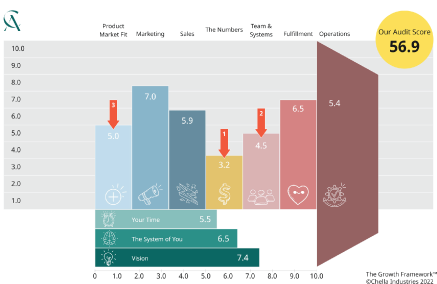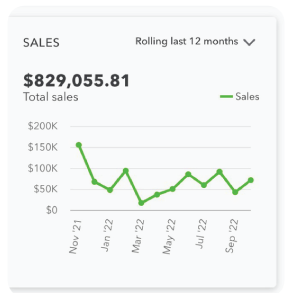Systems and
Profitability Work
say NO to a Merger

As the business grew, they became overwhelmed. Not only were they overworked, but the inconsistent cash flow made them uncomfortable.

Profitability
We broke down the 10 current offers to find:
- which ones were profitable,
- which offers needed to be removed,
- removed all bespoke offers,
- created a new offer suite focusing on only three core offers, and
- we shared the new menu with the team to sell these and only these.
sales positioning + Filling in the gaps
A lot of their clients were getting services at an old rate. We did some band positioning work to get clear on the company’s new value proposition, how to speak to it, the ROI they provide for clients, and how to upsell people into these new packages.
When we went back and sold the new offers to recent customers, current customers, and leads in the pipeline, it leveled out the monthly projections and cash flow sheet we built.
Project management
Instead of switching platforms, we found a way to optimize Podio (her PM tool) to continue using it for production management. We found a way to build a sales pipeline within the same software. This saved us the stress and fees of adding new software.
With the support systems in place, we got clear about her role as CEO and what needed to be removed from her list of responsibilities. Now with a clear financial plan, she felt confident hiring a regular assistant so that she could spend more time on the business and less time on set.
Having part-time admin support and on set support, allows her to no longer feel like she’s being pulled in a million directions and has returned her to the driver’s seat of the company.
We got clear around all the tasks that were overwhelming her and created a slow but steady hiring plan. We added a bookkeeper to remove invoicing and AR, we then hired a part-time on set assistant, and created systems to slowly offload work from Lauren.
Knowing the business was now operating profitably and having a financial run-rate, gave Lauren the freedom to begin to hire for the roles that were really stressing her, and start feeling supported by her team.

Did someone say merger?
When we addressed the mindset around this, she realized she liked being the CEO and declined the merger.
They now have cashflow projections, systems, support, time management and a growing empowered team.

Ready to transform
your business?

